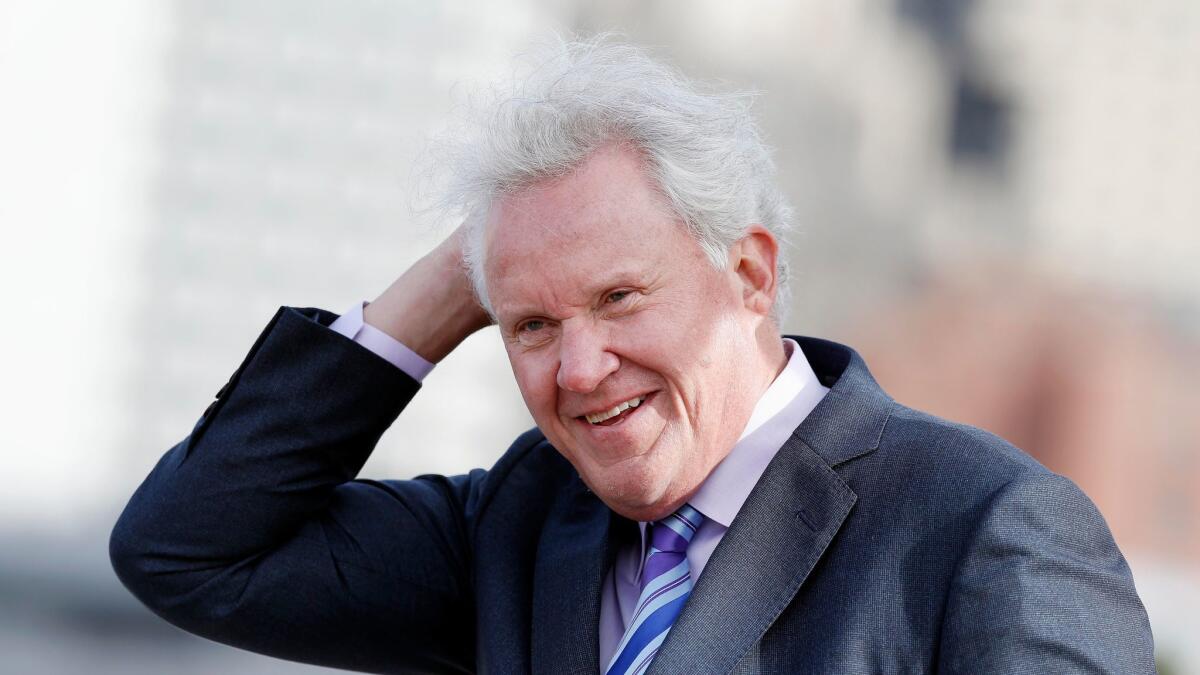Column: GE spent lavishly on shareholders, shortchanged pensions and still landed in a deep hole

- Share via
It’s customary to laud a departing corporate chief executive as a giant of industry and a management genius. That’s the tongue bath General Electric’s Jack Welch received when he retired in 2001. Not so much his successor Jeffrey Immelt, whose legacy already is being panned weeks ahead of his Aug. 1 scheduled departure.
Among other things, a close look is being taken at Immelt’s lavish spending on stock buybacks, especially over the last two years at the behest of the company’s biggest and richest shareholders. A new analysis by Bloomberg contrasts the nearly $46 billion GE spent to appease those shareholders in 2015 and 2016 with its chronic and growing underfunding of its pension plans.
I am privileged to have spent the last 16 years at the company working for Jeff, one of the greatest business leaders of our time.
— Incoming GE CEO John Flannery, giving the obligatory sendoff to his predecessor Jeff Immelt
By Bloomberg’s reckoning, the $31-billion shortfall in all GE’s pension plans — about 30% — is the biggest among companies in the Standard & Poor’s 500 by far. Rectifying the shortfall could create a long-term drag on earnings for Immelt’s successor as CEO, John Flannery.
Despite that, Flannery delivered the obligatory paean to Immelt’s leadership when his ascension was announced. (Immelt will remain chairman until Dec. 31.) “I am privileged to have spent the last 16 years at the company working for Jeff, one of the greatest business leaders of our time,” Flannery said, praising Immelt for having “created a vision for the GE of the future.”
Yet Immelt’s tenure has been nothing for investors to laud. Since he took over in September 2001, GE shares have returned a total of about 18% in price appreciation and dividends. In the same period, the S&P 500 has returned 195%.
Immelt gained nothing by paying off investors such as Nelson Peltz, whose Trian Partners held a $2.5-billion stake in GE as of October 2015. Peltz proposed that GE return to shareholders as much as 40% of its market capitalization (then about $260 billion) by the end of 2018, a process he said would raise its share price to $40 to $45 by the end of this year.
As we write, GE is short of both goals: Its current share buyback program totals $50 billion, about half what Peltz advocated, though the company has said that buybacks, dividends and spinoffs will return $90 billion to investors by the end of next year. Its share price is just shy of $29, never having risen higher than $30.86 (last December).
The company’s share repurchases coincided with a distinct underfunding of its pension plans. The buybacks came to $23.7 billion in 2015, including the equivalent of $20.4 billion from its spinoff of much of its GE Capital unit as Synchrony, and $22 billion more in 2016. Meanwhile the pension plans received only about $2 billion.
Partially as a result, the company’s financial disclosures show the shortfall growing within its main plan, covering 231,000 retirees and families and about 242,000 current and former workers and other plans, including those inherited via acquisitions, covering about 120,000 current and former workers. In 2015, the pension obligations of those plans came to about $90.3 billion and their assets to $63.1 billion, for a shortfall of about 30%. Last year, obligations had grown to about $94 billion and assets to about $63 billion, for a shortfall of about 33%.
As Bloomberg observes, GE’s options for closing the gap are limited. It could borrow to cover the expense, except it’s already a highly leverage corporation. And its expectation for long-term growth within the pension portfolio is 7.5% annually, which implies it will have to keep the portfolios heavily stocked with equities, which currently constitute about 56% of their holdings. One analyst cited by Bloomberg suggests that, given the ramp-up in premiums being charged on underfunded plans by the government’s Pension Benefit Guarantee Corp., which insures corporate pension plans, it may be worthwhile for GE to spend less on share buybacks and use the money to close the pension gap.
As a final irony, consider that Immelt has little to worry about in his own pension. As part of his retirement package, according to corporate disclosures, he’s due personal pension benefits worth nearly $82 million.
Keep up to date with Michael Hiltzik. Follow @hiltzikm on Twitter, see his Facebook page, or email [email protected].
Return to Michael Hiltzik’s blog.
More to Read
Inside the business of entertainment
The Wide Shot brings you news, analysis and insights on everything from streaming wars to production — and what it all means for the future.
You may occasionally receive promotional content from the Los Angeles Times.











